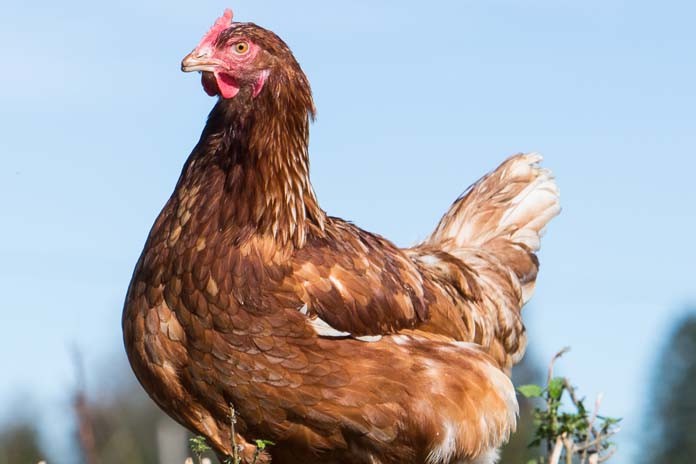
Free-range laying hen production systems are perceived to be preferable for hens’ ethological needs. However, not all hens use the range daily with some hens rarely venturing outdoors.
Free-range hens are typically reared indoors until point-of-lay, when they are first provided outdoor access. The outdoor environment exposes hens to unpredictable conditions including variable weather and predation, in comparison to the controlled, sheltered indoor environment in which pullets are reared. Thus hens may be reluctant to use the outdoor range. Modifications to housing environments or management practices during rearing can alter hen behaviour as adults within indoor housing systems but there are few data on the impacts of early enrichment on range use in free-range systems.
In this study, 300 Hy-line Brown day-old chicks were reared in 2 rooms (n = 150 chicks/room) with unpredictable, variable environmental enrichments provided in 1 room from 4 – 21 days, and standard rearing conditions (non-enriched) in the other room. From 21 days onwards, all birds were provided the same housing conditions. At 12 weeks of age, pullets were transferred to an experimental free-range facility, equally divided into 6 pens (n = 3 enriched rearing treatment, n = 3 non-enriched rearing treatment) and all birds leg-banded with microchips.
From 22 – 41 weeks of age, hens were provided daily range access with individual range use tracked via radio-frequency identification technology.
From 39 – 41 weeks of age the range was shrunk to 20% of its original size to measure hens’ range use responses to environmental change. Additionally, occurrences of natural hen disturbance behaviours (hens suddenly running towards the pop holes) on the range were decoded from video recordings at 23-25 and 35-36 weeks of age.
All data were analysed using General Linear Models in JMP® 12.1.0. Results showed the enriched hens on average, spent more hours on the range daily in the first 3 weeks of range access (22 – 25 weeks of age) (P = 0.03) including more individual visits to the range (P < 0.0001).
Conversely, during weeks 35-38, the non-enriched hens spent more hours on the range daily (P < 0.0001) with more visits to the range (P = 0.002). After the range was reduced in size all hens spent less time on the range but there was no difference between treatment groups in the magnitude of reduction in daily time ranging (P = 0.11).
The enriched hens however did increase their number of visits to the range more than the non-enriched-reared hens did (P = 0.005), spending less time per individual visit (P < 0.0001). There were no differences between treatment groups (P = 0.11) in occurrence of natural disturbance behaviours but significantly fewer disturbances on the range occurred at 35 – 36 weeks of age compared to 23 – 25 weeks of age (P < 0.0001).
These preliminary results show environmental enrichments provided during early development increased range use when birds were first provided range access but over time this pattern changed. The rearing treatments impacted birds’ responses to environmental change but further replication of the enrichment rearing treatment, including trailing different types of enrichment (e.g. manipulable versus structural) are needed.
Acknowledgment
The Authors thank the Poultry CRC for financial support.
From the Proceedings of the 2017 Australian Poultry Science Symposium















